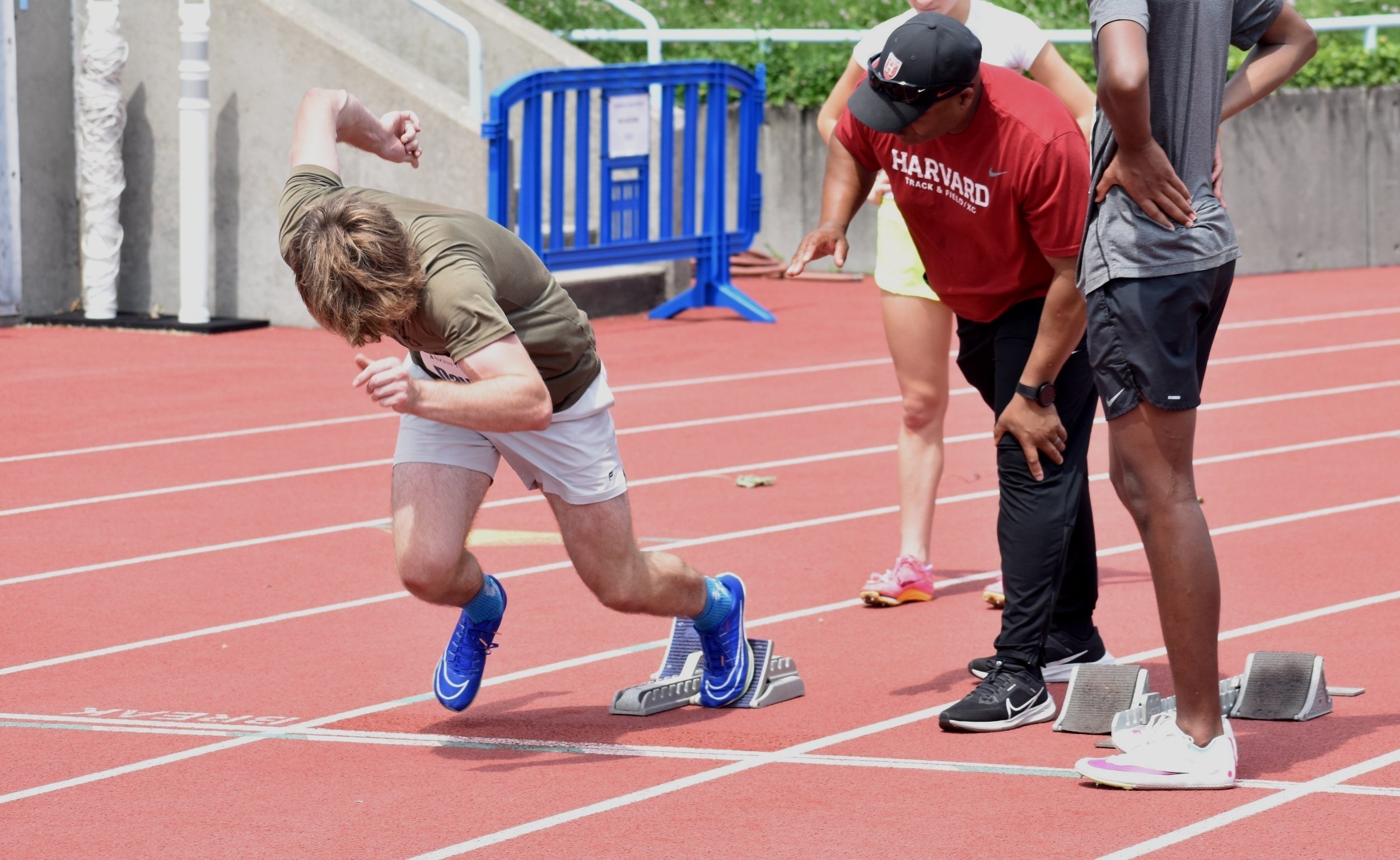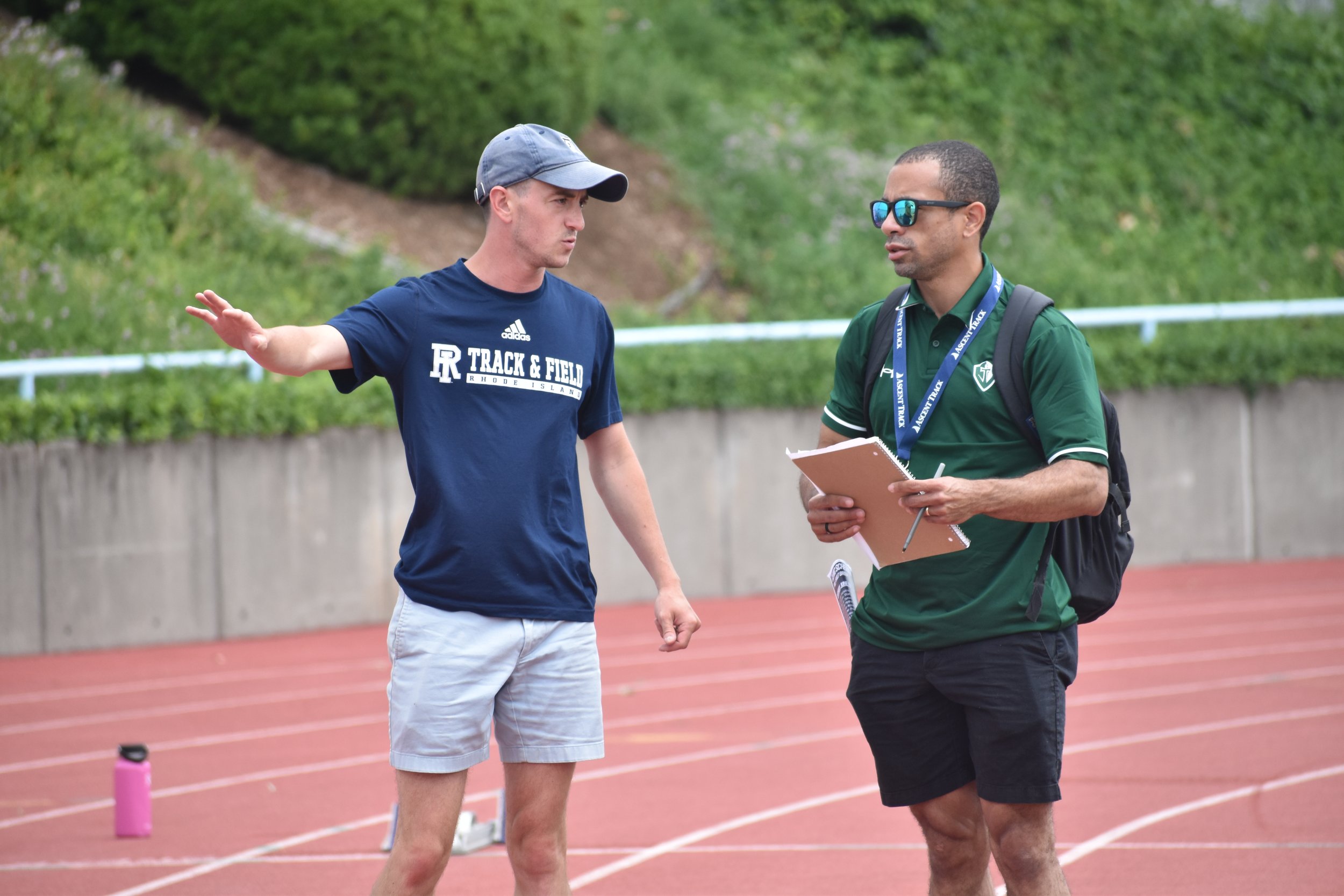
121. The HIGH jump: Technique and teaching
Immerse yourself in a fully comprehensive, self-paced high jump instructional from veteran instructor and founder of USTFCCCA’s Track & Field Academy, Boo Schexnayder.
~9 Hrs. Duration | 52 Pages of Course Materials | 15 Knowledge Retention Checks
Course instructor
BOO SCHEXNAYDER
Director, Consultant, Coach
SAC Speed
With over 40 years of experience in coaching and consulting, Boo Schexnayder is regarded as one of the world’s premier field event coaches.
He was the mastermind behind 26 NCAA Champions during his collegiate coaching career, was part 13 NCAA Championship teams and a pair of Juco National titles, and he has developed a host of conference champions and All-Americans.
Schexnayder has also been a prominent figure on the international scene. He has coached 18 Olympians and 7 Olympic/World Championship medalists, and served on coaching staffs for Team USA to the 2003 Pan Am Games in Santo Domingo, the 2006 World Junior Championships in Beijing, and was the Jumps Coach for Team USA at the 2008 Olympics in Beijing.
-
Schexnayder has been just as successful off the track. He is certified at Level I, II and III, and owns the prestigious Master Coach Designation from USA Track and Field. He is also certified by the NSCA as a Strength and Conditioning coach.
Schexnayder has been heavily involved in Coaching Education. He formerly served as national chair of USATF’s Coaching Education Committee, Jumps Subcommittee chair, and chair of the Biomechanics subcommittee.
Schexnayder was also the founder of the Track and Field Academy, the educational branch of the US Track and Field and Cross Country Coaches Association. He served as program director from its inception in 2009 through 2017, and still serves as an instructor in biomechanics, training design, and event-specific courses.
GET ACCESS:
COURSE DESCRIPTION
A COMPREHENSIVE HIGH JUMP INSTRUCTIONAL
High Jump: Technique and Teaching is a comprehensive course designed to equip coaches and athletes with the knowledge and systems needed to teach and perform the high jump at all levels.
Developed and led by Coach Boo Schexnayder, the course breaks down each phase of the high jump—from the start through the approach, takeoff, flight, and bar clearance—into detailed, teachable components.
Participants will explore how to generate tangential forces through curve mechanics, apply proper takeoff and flight techniques, and use visual focus and alignment strategies to enhance performance.
The course also includes practical systems for assembling and triangulating approaches, teaching foundational and high jump-specific skills, and implementing season-long coaching progressions.
Emphasizing both biomechanical precision and effective coaching methodology, this course provides a clear, progressive framework for developing successful high jumpers.
GET ACCESS:
COURSE LAYOUT
01. BASIC HIGH JUMP BIOMECHANICS
Understanding the foundational role of the curved approach in high jump technique, and learn how tangential forces determine bar clearance.
VIDEO: Basic High Jump Biomechanics
STUDY NOTES: Basic High Jump Biomechanics
KNOWLEDGE RETENTION CHECK: Basic High Jump Biomechanics
02. APPROACH BASICS
Learn how to structure and personalize the high jump approach—from step counts to foot selection—to build momentum, ensure consistency, and set up a technically sound takeoff.
VIDEO: Approach Basics
STUDY NOTES: Approach Basics
KNOWLEDGE RETENTION CHECK: Approach Basics
03. THE START
Refining the start to build momentum, reinforce consistency, and set the foundation for an efficient high jump approach.
VIDEO: The Start
STUDY NOTES: The Start
KNOWLEDGE RETENTION CHECK: The Start
04. THE DRIVE PHASE
Build momentum and proper posture in the early steps of the approach by mastering the drive phase, setting the tone for an efficient transition into the curve.
VIDEO: The Drive Phase
STUDY NOTES: The Drive Phase
KNOWLEDGE RETENTION CHECK: The Drive Phase
05. TRANSITION INTO THE CURVE
Mastering the transition steps into the curve ensures a smooth shift from linear momentum to tangential force production—setting up the body position and lean needed for an effective takeoff.
VIDEO: Transition into the Curve
STUDY NOTES: Transition into the Curve
KNOWLEDGE RETENTION CHECK: Transition into the Curve
06. THE CURVE
Harness proper sprint mechanics and body alignment to generate tangential forces in the curve—crucial for building lift and setting up an efficient takeoff.
VIDEO: The Curve
STUDY NOTES: The Curve
KNOWLEDGE RETENTION CHECK: The Curve
07. ARRIVAL AT TAKEOFF
Maintain optimal takeoff location, curve mechanics, and body alignment in the final steps to ensure a smooth, vertical launch and clean bar clearance.
VIDEO: Arrival at Takeoff
STUDY NOTES: Arrival at Takeoff
KNOWLEDGE RETENTION CHECK: Arrival at Takeoff
08. VISUAL FOCUS IN THE APPROACH
Training the eyes to guide the body— visual checkpoints from start to takeoff to enhance spatial awareness, consistency, and performance.
VIDEO: Visual Focus in the Approach
STUDY NOTES: Visual Focus in the Approach
KNOWLEDGE RETENTION CHECK: Visual Focus in the Approach
09. PREPARATION
Set up for vertical lift by refining penultimate step mechanics, managing center of mass, and preserving rhythm through the final strides of the approach.
VIDEO: Preparation
STUDY NOTES: Preparation
KNOWLEDGE RETENTION CHECK: Preparation
10. THE TAKEOFF
Maximize vertical lift and initiate key body rotations by combining precise posture, explosive leg action, and synchronized arm and free leg swing.
VIDEO: The Takeoff
STUDY NOTES: The Takeoff
KNOWLEDGE RETENTION CHECK: The Takeoff
11. FLIGHT
Execute smooth, efficient flight mechanics by accelerating rotation, maintaining spatial awareness, and avoiding mid-air compensations over the bar.
VIDEO: Flight
STUDY NOTES: Flight
KNOWLEDGE RETENTION CHECK: Flight
12. ASSEMBLING THE APPROACH
Learn how to estimate, test, and refine approach layout to support consistency, generate force, and optimize jump performance.
VIDEO: Assembling the Approach
STUDY NOTES: Assembling the Approach
KNOWLEDGE RETENTION CHECK: Assembling the Approach
13. TRIANGULATING THE APPROACH
Use geometric principles to set accurate checkmarks and eliminate spatial guesswork—ensuring a consistent, repeatable approach every time.
VIDEO: Triangulating the Approach
STUDY NOTES: Triangulating the Approach
KNOWLEDGE RETENTION CHECK: Triangulating the Approach
14. TEACHING SYSTEMS FOR THE HIGH JUMP
Develop high jumpers through a progressive teaching system—starting with general jumping skills and curve mechanics, and advancing to technical drills, short-run jumps, and full-approach execution.
VIDEO: Teaching Systems for the High Jump
STUDY NOTES: Teaching Systems for the High Jump
KNOWLEDGE RETENTION CHECK: Teaching Systems for the High Jump
15. COACHING PRACTICES FOR THE HIGH JUMP
Apply season-long coaching strategies that emphasize approach consistency, curve refinement, and confidence-building progressions—while using structured drills and patient technical teaching to avoid long-term setbacks.
VIDEO: Coaching Practices for the High Jump
STUDY NOTES: Coaching Practices for the High Jump
KNOWLEDGE RETENTION CHECK: Coaching Practices for the High Jump
16. FOLLOW-UP QUESTIONNAIRE AND CERTIFICATION
FOLLOW-UP QUESTIONNAIRE: High Jump: Technique and Teaching
CERTIFICATE OF COMPLETION: High Jump: Technique and Teaching
GET ACCESS:
What to Expect
EXPERT INSTRUCTORS
Our instructors are proven track & field veterans with experience as educators, program directors, and coaches at the collegiate, professional, and international levels. Each course has been meticulously planned and prepared by its instructor to ensure a comprehensive learning experience for every student.
SELF-PACED LEARNING
Learn on your own terms in our self-paced educational environment. Progress through video lessons, review study guides, and complete knowledge retention checks all on your own schedule. You can even skip sections and return to them later. There’s no time requirement for finishing the course. Once you buy it, you can access it forever.
DOWNLOADABLE CONTENT
Each course includes supplementary documentation – from study guides and glossaries to diagrams and inventories. All of this documentation is downloadable. Save it, print it, and take it with you to practices and meets to make an immediate impact with your newfound knowledge. Videos you can access wherever you have an internet connection.
KNOWLEDGE RETENTION CHECKS
Complete each course confidently with the help of our knowledge retention checks. After every module, these short quizzes test your knowledge of key concepts to ensure your grip on the material is strong.
Knowledge retention checks are optional unless you intend to receive a Certificate of Achievement upon completion, which requires an 80% or better on all.
CERTIFICATE OF ACHIEVEMENT
Showcase your knowledge to administration and staff with a Certificate of Achievement. You’ll have the option to request one of these if you’ve completed every module of the course and passed all knowledge retention checks with a score of 80% or higher.
GET ACCESS:
Frequently asked questions
Don’t see your question below? Contact us.
-
No, you can choose to enroll at any time you’d like, and take however much time you want to; the course will always be there for whatever timeline suits you.
-
Yes and no– it is not possible to download the video lessons, but you can download all PDF materials.
-
There is no time limit to your login, and you can go back and look at any part of the course you want at any time.
-
You must show that you have an understanding of the material by achieving a mark of 80% or higher on the Knowledge Retention Checks– but don’t worry, you can take those Knowledge Retention Checks more than one time if need be.
-
For any course content, we encourage you to write the questions in the Ascent Track Discord in each class section. For any technical issues, you can contact us at support@ascenttrackclinics.com









